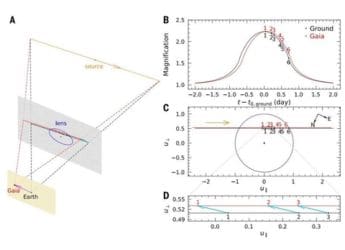- Home
- Science
- Science Features
- NASA Skywatching Tips: Pay Attention to the Night Sky This September, Interesting Things Are Happening
NASA Skywatching Tips: Pay Attention to the Night Sky This September, Interesting Things Are Happening
NASA says a clear view of the horizon will offer some spectacular planetary groupings in the first half of this month.

Mercury will be longer above the horizon, before it sets, if you are viewing it from farther south
This month appears to be rewarding for skywatchers with a full range of binocular and telescopic sights in the offing. All through September, interesting cosmic events will take place and can be seen over the horizon, according to NASA. The space agency said in its monthly update astronomers and space enthusiasts will have to gear up early as Mercury, the smallest planet in the Solar System will appear low in the west briefly, about half an hour after the sunset. Because Mercury is so small, only slightly larger than Earth's Moon and so close to the Sun, it is very difficult to see it with the naked eye.
There's more. A clear view of the horizon will offer some spectacular planetary groupings in the first half of this month. Mercury will be longer above the horizon, before it sets, if you are viewing it from farther south. Once you have found Mercury, turn a little south for the much brighter Venus, which is also Earth's closest planetary neighbour. On the 9th and 10th, this pairing will be joined by the crescent Moon.
All this and more “skywatching tips” were shared by NASA in an Instagram post.
Between the two planets will be the bright star Spica. Two other bright stars that can be easily spotted early in the evening throughout September are the Arcturus, the brightest orange-coloured star in the northern sky, and Altair, the bright white-coloured star hanging right above Saturn all month. Altair rotates very fast, which has flattened it into an oval shape.
To easily find Arcturus in the night sky, first look for the Big Dipper aka “the Plough”, which is called the Saptarishi constellation in ancient Indian astronomy. Follow its arc, the handle, towards the south and the bright star there will be Arcturus.
“At only 37 light-years from our Solar System, Arcturus is the brightest star in the northern sky,” said NASA.
Compared to other stars, Arcturus moves very fast with respect to our Solar System. Before this interesting aspect about the motion of the star was discovered, it was thought that the positions of stars were fixed. Edmund Halley first figured out that the stars move around as independent objects.
On September 16, the Moon, Saturn, and Jupiter will be in a close approach. The September Equinox will happen on the 22nd of this month when the Sun will be exactly above Earth's equator, so night and day will be of the same duration.
Catch the latest from the Consumer Electronics Show on Gadgets 360, at our CES 2026 hub.
Related Stories
- Samsung Galaxy Unpacked 2025
- ChatGPT
- Redmi Note 14 Pro+
- iPhone 16
- Apple Vision Pro
- Oneplus 12
- OnePlus Nord CE 3 Lite 5G
- iPhone 13
- Xiaomi 14 Pro
- Oppo Find N3
- Tecno Spark Go (2023)
- Realme V30
- Best Phones Under 25000
- Samsung Galaxy S24 Series
- Cryptocurrency
- iQoo 12
- Samsung Galaxy S24 Ultra
- Giottus
- Samsung Galaxy Z Flip 5
- Apple 'Scary Fast'
- Housefull 5
- GoPro Hero 12 Black Review
- Invincible Season 2
- JioGlass
- HD Ready TV
- Laptop Under 50000
- Smartwatch Under 10000
- Latest Mobile Phones
- Compare Phones
- Vivo Y50e 5G
- Vivo Y50s 5G
- Realme 16 Pro+ 5G
- Realme 16 Pro 5G
- TCL Nxtpaper 70 Pro
- OPPO A6 Pro 5G
- Honor Power 2
- OPPO A6s
- Zephyrus Duo 16 (2026)
- Asus ROG Zephyrus G16 (2026)
- Realme Pad 3
- OPPO Pad Air 5
- Xiaomi Watch 5
- Huawei Watch 10th Anniversary Edition
- Acerpure Nitro Z Series 100-inch QLED TV
- Samsung 43 Inch LED Ultra HD (4K) Smart TV (UA43UE81AFULXL)
- Asus ROG Ally
- Nintendo Switch Lite
- Haier 1.6 Ton 5 Star Inverter Split AC (HSU19G-MZAID5BN-INV)
- Haier 1.6 Ton 5 Star Inverter Split AC (HSU19G-MZAIM5BN-INV)

















